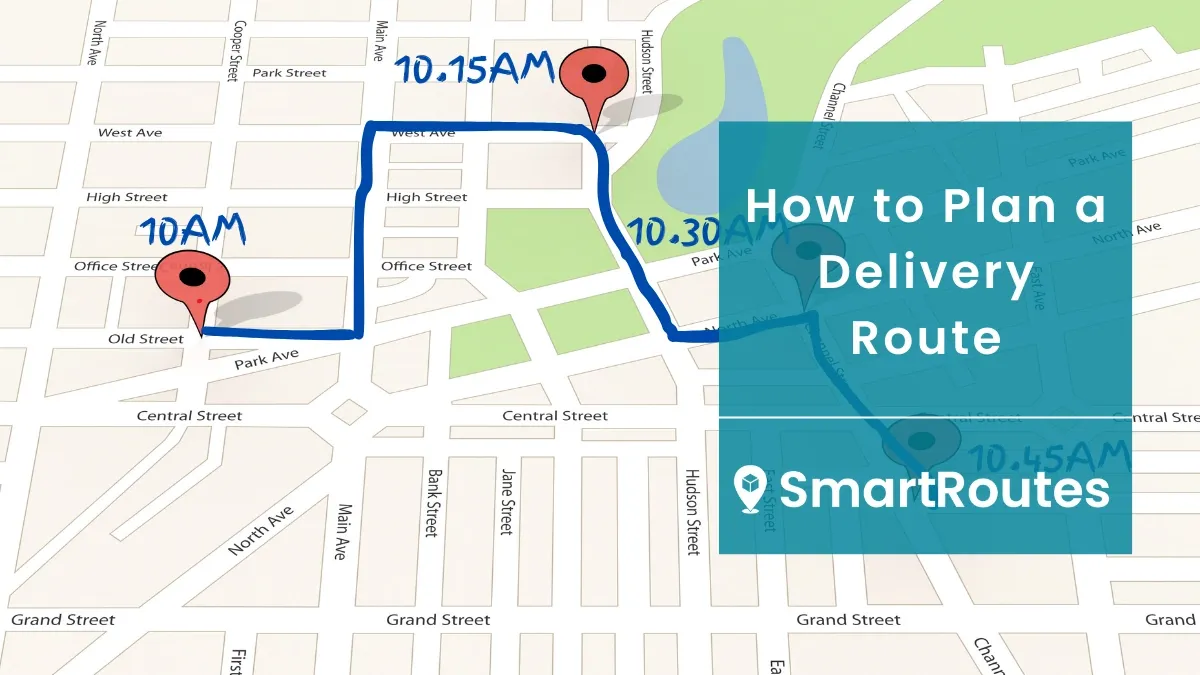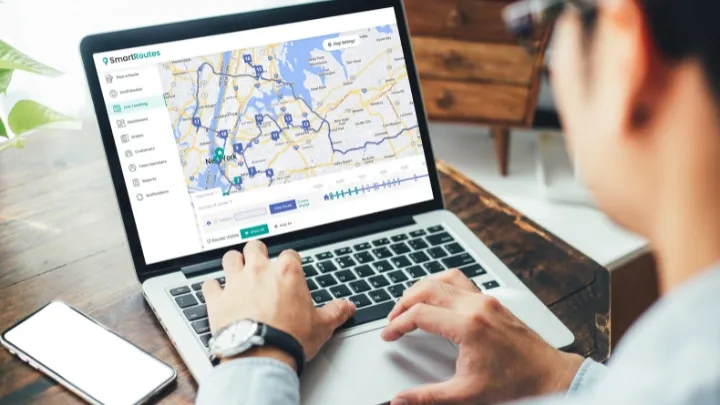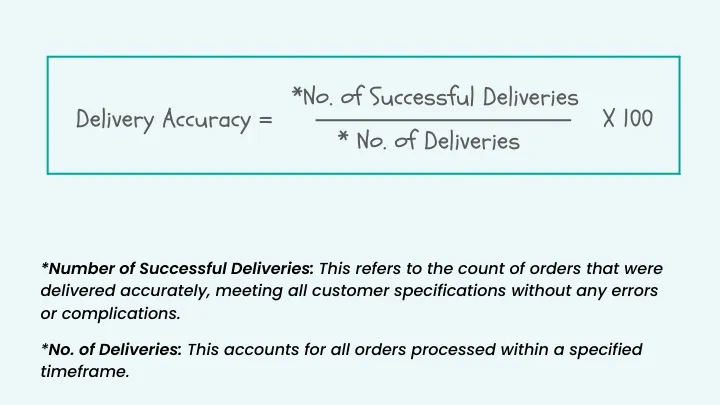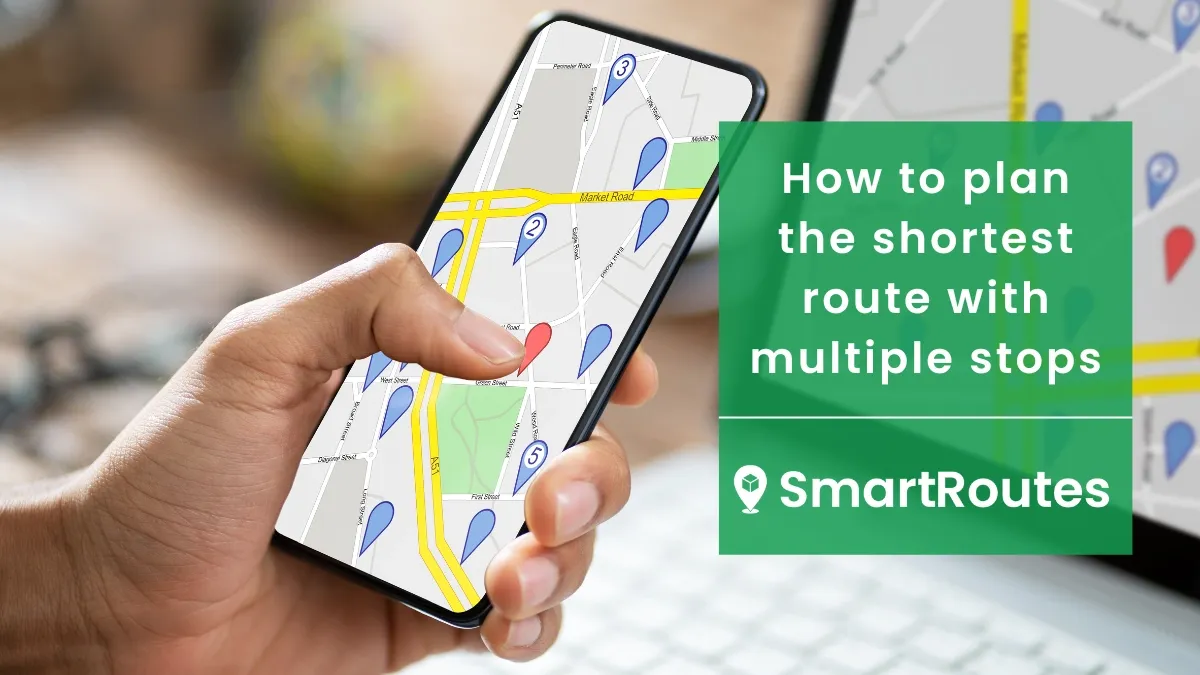How to Plan a Delivery Route
Discover expert insights on how to plan a delivery route and delve into the step-by-step process of planning delivery routes efficiently.

In the world of logistics, every delivery counts. Whether you're distributing goods across town or the country, the efficiency of your delivery routes can make or break your operations. In this blog, we'll dive into the importance of planning delivery routes effectively and explore two primary methods: manual planning and utilizing route planning software.
Importance of Planning Delivery Routes
Manual Route Planning vs. Automated Route Planning
How to Plan a Delivery Route with SmartRoutes
Importance of Planning Delivery Routes
Efficient delivery routes aren't just about getting from point A to point B. They're about maximizing resources, minimizing costs, and ensuring customer satisfaction. By planning your routes thoughtfully, you can benefit from the following:
- Fuel Consumption: Well-planned routes enable drivers to take the most fuel-efficient paths, minimizing unnecessary mileage and idling time. By cutting down on fuel consumption, companies not only reduce their environmental footprint but also save significantly on fuel costs.
- Vehicle Wear & Tear: By reducing the miles driven by each vehicle, you indirectly minimize the wear and tear on vehicles. Businesses can extend the lifespan of their fleet, ultimately reducing maintenance expenses and downtime.
- Delivery Times and Productivity: Time is money in the world of logistics. Efficient routes ensure that drivers spend less time on the road and more time making deliveries. By minimizing travel distances and optimizing the sequence of stops, companies can streamline their operations, meet delivery deadlines more consistently, and increase overall productivity.
- Driver Schedules and Workload Distribution: By optimizing driver schedules and distributing assignments equitably, companies can prevent overloading certain drivers while others remain underutilized. This not only boosts driver morale and reduces turnover but also ensures that deliveries are completed efficiently and on time.
- Customer Experience: Customers expect transparency and reliability when it comes to deliveries. Thoughtfully planned routes allow businesses to provide accurate delivery windows and proactive notifications to customers, keeping them informed every step of the way.
Planning delivery routes goes beyond mere navigation— it helps businesses to optimize resources, minimize costs and exceed customer expectations. By investing time and resources into route planning, companies can drive efficiencies throughout their supply chain, ultimately positioning themselves for long-term success in an increasingly competitive marketplace.
SmartRoutes Route Planning Software
Streamline your entire delivery process, all from one platform

How to Plan a Delivery Route?
Let’s take a look at your 2 options:
1. Manual Route Planning:
Manual route planning is a traditional yet effective method that requires careful consideration and organization. Here's a detailed breakdown of how to plan delivery routes manually:
Step 1: Map Out Delivery Stops:
Start by identifying all delivery stops on a map, taking into account their locations and any specific requirements or constraints.
It's essential to consider variations in routes, such as different delivery requirements for weekdays versus weekends.
Step 2: Calculate Distances and Fuel Consumption:
While fewer miles may seem like an obvious choice to reduce fuel usage, it's crucial to consider other factors that can impact efficiency.
Calculate distances accurately and estimate fuel consumption based on factors like traffic patterns, road conditions, and vehicle efficiency.
Step 3: Group Nearby Stops:
Consolidate delivery stops that are in close proximity to each other to streamline routes and minimize travel time.
By clustering deliveries geographically, you can optimize driver routes and reduce operational costs associated with fuel and labour.
This approach also ensures that drivers can make more deliveries within a shorter timeframe, increasing overall efficiency.
Step 4: Collaborate with Customers:
Communication with customers is essential for successful deliveries.
Collaborate with them to determine convenient delivery times and preferences, such as specific time windows or delivery instructions. Prioritize high-priority deliveries accordingly, ensuring that urgent orders are fulfilled promptly.
Implementing time windows can further optimize routes by consolidating deliveries during specific timeframes, improving efficiency and customer satisfaction.
Step 5: Plan for the Unknown:
Flexibility is key in route planning, as unexpected challenges can arise at any moment. Be prepared to adjust routes on the fly in response to real-world obstacles such as road closures, detours, or unavailable customers.
Having alternative routes readily available ensures that deliveries can proceed smoothly, minimizing disruptions and delays.
2. Automated Route Planning:
In contrast to manual planning, automated route planning leverages advanced software solutions to streamline the process. Here's how to plan delivery routes using automation:
Step 1: Collect and Organize Delivery Data:
Begin by gathering comprehensive delivery data, including customer information, delivery addresses, time windows, and any special requirements.
This data can be collected manually or integrated seamlessly with routing software through automated systems.
Organize the data in a structured format for easy input into the routing software.
Step 2: Generate Optimized Routes:
Utilize routing software to generate optimized routes with minimal effort.
With the click of a button, the software considers various factors such as distance, time windows, vehicle capacities, and delivery priorities to create efficient routes.
By automating this process, businesses can save time and resources while maximizing route efficiency.

Step 3: Adapt Routes in Real-Time:
One of the key advantages of automated route planning is the ability to adapt routes dynamically in response to changing conditions.
With real-time updates and tracking capabilities, businesses can monitor routes as they unfold and make adjustments as needed.
Automated notifications can also be sent to customers with live ETAs and tracking links, keeping them informed throughout the delivery process.
In summary, both manual and automated route planning offer unique advantages for organizing delivery routes effectively.
While manual planning allows for greater flexibility and hands-on control, automated solutions streamline the process and offer real-time optimization capabilities. Ultimately, the choice between manual and automated route planning depends on the specific needs and resources of each business.
Manual Route Planning vs. Automated Route Planning
Time Efficiency:
Manual route planning involves significant time and effort spent on mapping out routes, calculating distances, and organizing delivery schedules. This manual process can be labor-intensive and time-consuming, especially when dealing with a large volume of deliveries or complex routes.
In contrast, automated route planning streamlines the process, eliminating the need for manual calculations and organization. By leveraging algorithms to optimize routes efficiently, automated systems save time and effort, enabling faster planning and execution.
Efficiency in Operations:
Due to the complexity of manually optimizing routes, there is a higher likelihood of inefficiencies such as suboptimal sequencing of stops, excessive travel distances, and inefficient allocation of resources. This can result in wasted time, fuel, and labor, ultimately impacting overall operational efficiency.
Automated systems utilize sophisticated algorithms to optimize routes based on various factors such as distance, traffic conditions, and delivery priorities. This ensures that routes are efficient and well-optimized, minimizing wastage and improving overall operational efficiency.
Cost Consideration:
The inefficiencies inherent in manual route planning can lead to higher operational costs, including increased fuel consumption, vehicle maintenance expenses, and labor costs. Additionally, the time and resources required for manual planning can divert resources from other critical aspects of business operations.
By optimizing routes and minimizing inefficiencies, automated route planning software helps businesses decrease delivery costs by lowering fuel consumption, vehicle wear and tear, and labor expenses. These cost savings contribute to improved profitability and operational efficiency.
Delivery Success Rate:
Manual route planning may result in missed deliveries or delays due to human error, unexpected obstacles, or inadequate route optimization. These failures can damage customer relationships, harm brand reputation, and incur additional costs for rescheduling or redelivering orders.
Automated systems ensure accurate and timely deliveries by optimizing routes and providing real-time updates to drivers. This reduces the risk of failed deliveries and enhances customer satisfaction and loyalty.

Workload Distribution:
Without sophisticated algorithms to optimize workload distribution, manual route planning may lead to uneven distribution of deliveries among drivers. This can result in some drivers being overburdened with excessive stops and others having lighter workloads, leading to inequities in workload distribution and potential burnout among drivers.
Automated systems evenly distribute deliveries among drivers through sophisticated algorithms, ensuring a balanced workload and minimizing the risk of driver burnout. This leads to improved morale and productivity among drivers.
Oversight:
Manual route planning lacks real-time visibility and oversight into driver activities and route performance. Without automated tracking and monitoring capabilities, businesses may struggle to identify inefficiencies, address issues promptly, and make data-driven decisions to improve route planning and execution.
Automated systems provide real-time visibility and oversight into driver activities and route performance through tracking and monitoring capabilities. This allows businesses to identify inefficiencies promptly, address issues, and make data-driven decisions to optimize route planning and execution.
How to Plan a Delivery Route with SmartRoutes
SmartRoutes offers a user-friendly platform designed to streamline the route planning process. Here's a step-by-step guide on how to use SmartRoutes effectively:
Step 1: Login to Your SmartRoutes Account: Visit smartroutes.io and log in to your account. If you don't have an account yet, you can sign up for a 7 day free trial to get started.
Step 2: Set Up Integration or Upload Data: Once logged in, you have the option to set up integrations with your existing systems or manually upload delivery data. SmartRoutes allows you to import data from Excel spreadsheets or integrate with other platforms seamlessly.
For a more detailed guide on data integration, refer to our comprehensive guide: Integrations: How does it work?.
Step 3: Configure Route Parameters: After uploading or integrating your delivery data, configure route parameters such as time windows, vehicle capacities, and delivery priorities. SmartRoutes offers customizable settings to tailor routes to your specific needs and preferences.
Step 4: Generate Optimized Routes: With your data and parameters in place, it's time to generate optimized routes. Click the "Generate Routes" button, and SmartRoutes will use advanced algorithms to calculate the most efficient delivery sequences based on your criteria.
Step 5: Review and Edit Routes: Review the generated routes to ensure they meet your requirements. SmartRoutes provides interactive maps and route summaries to help you visualize and assess the proposed routes. Make any necessary adjustments or edits to optimize routes further.
Step 6: Dispatch Routes: Once you're satisfied with the routes you can send them to your drivers via the driver mobile app, which is available to download on IOS and Android.
Optimize Your Delivery Routes with SmartRoutes
In the fast-paced world of deliveries, effective route planning is essential. Whether you opt for manual planning or embrace the efficiency of route planning software like SmartRoutes, prioritizing optimization will ultimately lead to smoother operations, happier customers, and a healthier bottom line.
Take advantage of our 7 day free trial to experience the benefits of SmartRoutes firsthand!
Frequently asked questions
1. What distance is needed between delivery stops?
The ideal distance between delivery stops can vary depending on factors such as the type of delivery vehicle, road conditions, traffic patterns, and the specific needs of your business. In general, a common recommendation is to aim for stops that are within a 5-10 minute drive from each other. However, this distance may need to be adjusted based on factors like the volume of deliveries, time constraints, and the density of stops in a particular area.
2. How do you plan the most efficient delivery route?
Planning the most efficient delivery route involves several steps:
- First, gather all necessary delivery information, including addresses, delivery time windows, and any special instructions.
- Use route planning software or manual methods to optimize the sequence of delivery stops, considering factors like distance, time windows, and vehicle capacities.
- Adjust routes as needed to accommodate real-time changes, such as new orders or unexpected obstacles.
- Continuously monitor and analyze route performance to identify areas for improvement and optimization.
3. Is there an app to plan a delivery route?
Yes, there are several apps available to plan delivery routes efficiently. These apps typically allow users to input multiple delivery addresses, optimize routes based on various criteria, and receive real-time updates and navigation assistance while on the road.
If you enjoyed this blog, you might also be interested in:







